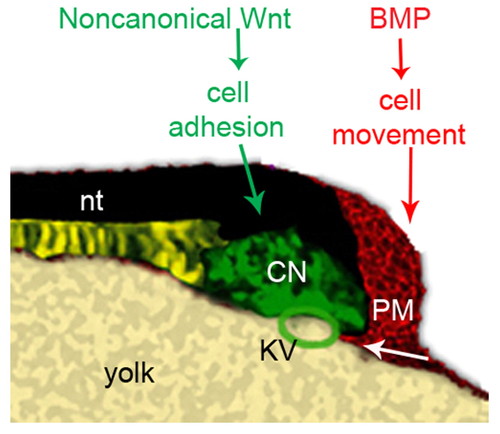FIGURE
Fig. 8
- ID
- ZDB-FIG-110622-92
- Publication
- Yang et al., 2011 - BMP and non-canonical Wnt signaling are required for inhibition of secondary tail formation in zebrafish
- Other Figures
- All Figure Page
- Back to All Figure Page
Fig. 8
|
A model for the roles of BMP and non-canonical Wnt signaling in regulating tail development. Depiction of the tailbud of a 10-somite wild-type zebrafish embryo. During tailbud protrusion, BMP signaling in the posterior tailbud plays a crucial role in guiding the ventroposterior mesoderm cells to move beneath the Kupffer′s vesicle properly. Non-canonical Wnt signaling promotes intercellular adhesion of cells in the caudal end of notochord, allowing them to maintain cohesion during tail elongation. CNH, the caudal end of notochord; nt: notochord; PM, posterior mesoderm; KV, Kupffer′s vesicle. |
Expression Data
Expression Detail
Antibody Labeling
Phenotype Data
Phenotype Detail
Acknowledgments
This image is the copyrighted work of the attributed author or publisher, and
ZFIN has permission only to display this image to its users.
Additional permissions should be obtained from the applicable author or publisher of the image.
Full text @ Development

